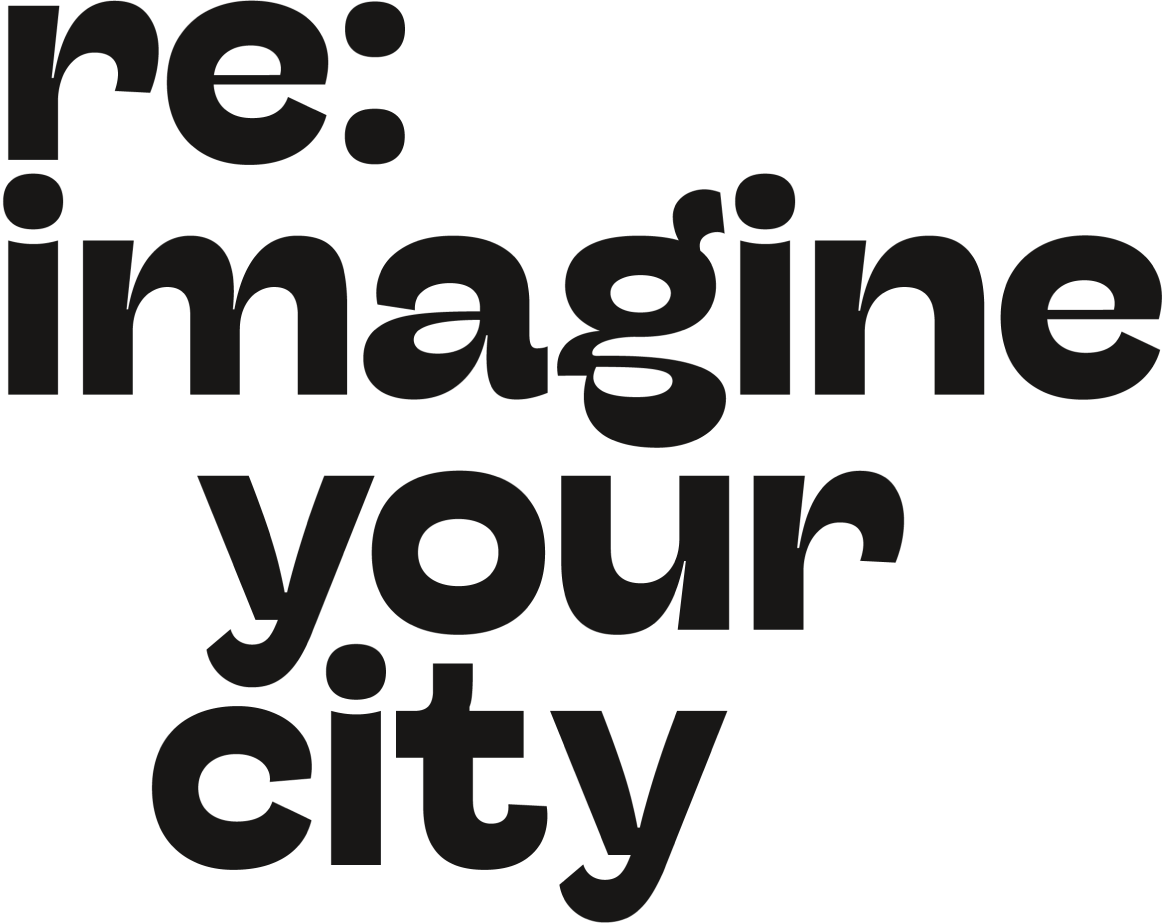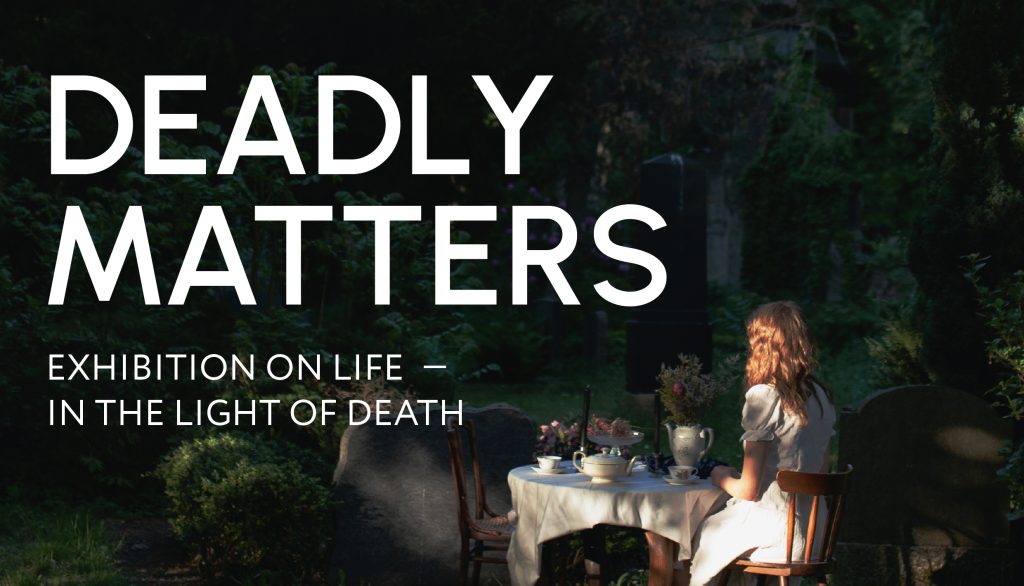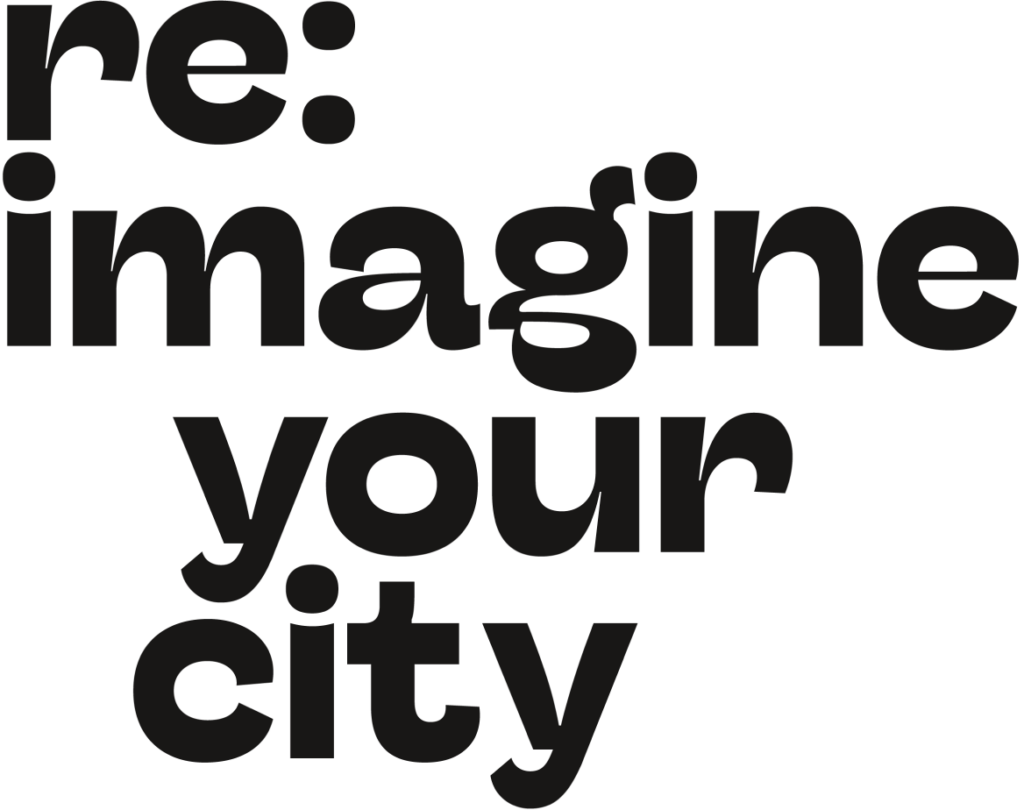Katya Romanova, co-founder of re:imagine your city, formed part of the Deadly Matters exhibition — a reflection on life in the light of death — at the Georgien-Parochial Cemetery II in Berlin-Friedrichshain. Katya explored farewell rituals involving food and eating by opening a pop-up café called “berlin bones” and inviting guests to join her at a long table on the cemetery’s green meadow.
The pop-up café “berlin bones” served as an imagined gathering space around a shared table at the Georgien-Parochial Cemetery during the Deadly Matters exhibition. The Deadly Matters collective consisted of seven female artists who undertook a personal exploration of their relationships with death, presenting the results at the cemetery through photography, sound, texts, sculptures, embroidery, installations, and a public program.
The café host is Katya Romanova, the author of the podcast berlin bones, where stories from Berlin cemeteries are told through the lenses of urban planning, sociology, culture, ecology, and religion. The name of the café also pays homage to the story of the meadow where the café was located. It holds remnants discovered during excavation works for building construction in the northern part of the cemetery.
Katya created a collective space for sharing memories, feelings and experiences about death and commemoration. Food, often an important element of farewell rituals, becomes a focal point as we research and reimagine mourning rituals related to food and eating. Can sharing food become a source of comfort and consolidation? What insights can we gain from the diverse cultures represented in Berlin? What cemeteries could offer as places of mourning and memory?
Death in Berlin
– Intercultural aspects of death and dying
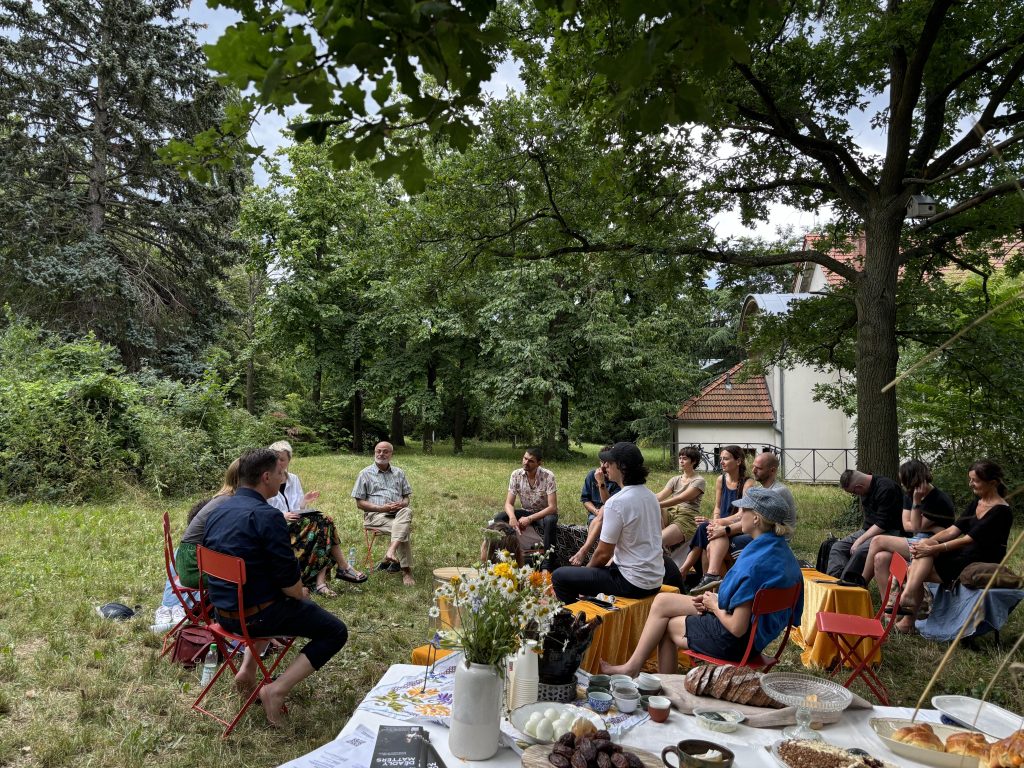
As part of the intercultural discussion on July 6, we approached the topic of life, death and dying from the perspective of different faith communities in Berlin. What makes a life worth living? What is a good death? How and where are the deceased buried? And is there an afterlife? We explore different concepts and changing funeral and mourning cultures in Berlin.
The talk was co-moderated by Gesine Last, Founder of wortwert.studio, co-curator of the exhibition un_endlich. Leben mit dem Tod (2023). Guests: Isikali Karayel, Muslim undertaker, Dr. Dharma Raj Bhusal, Director interkultureller Hospizdienst Dong Ban Ja, and Jasmin El-Manhy, Pastor.
We finished the talk with memorial food buffet from different cultures and traditions, including home-made koliva, pan de muerto, Nepal veggie momos, boiled eggs, Medjool dates, and Leichenschmaus (cheese & bread).
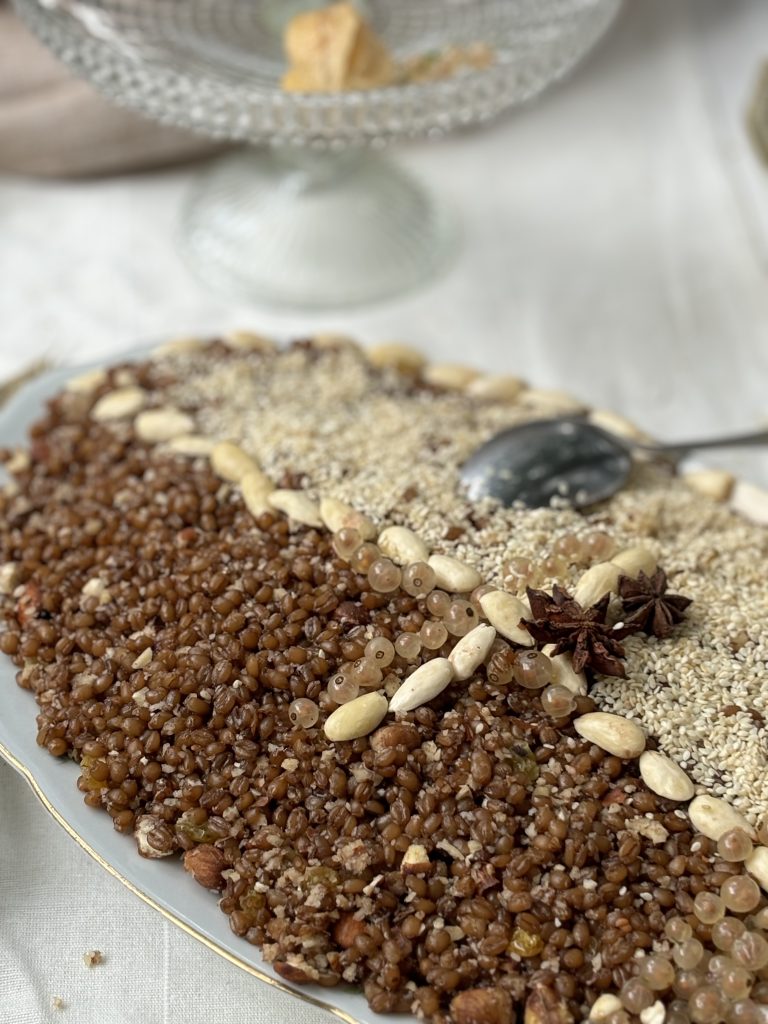
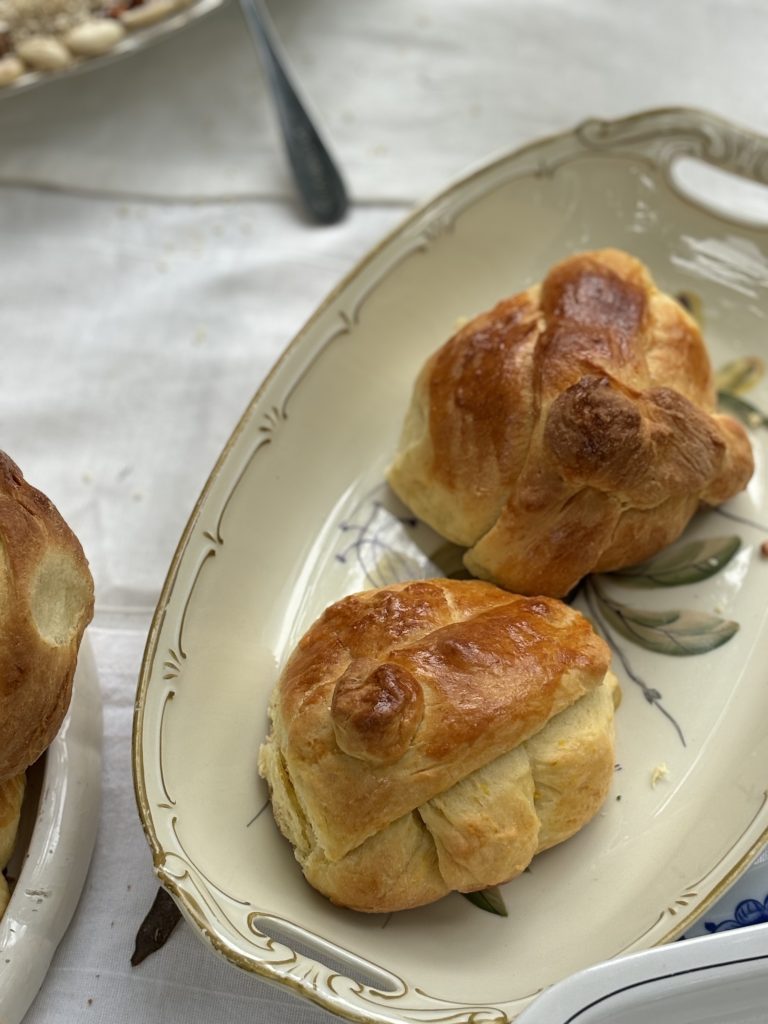
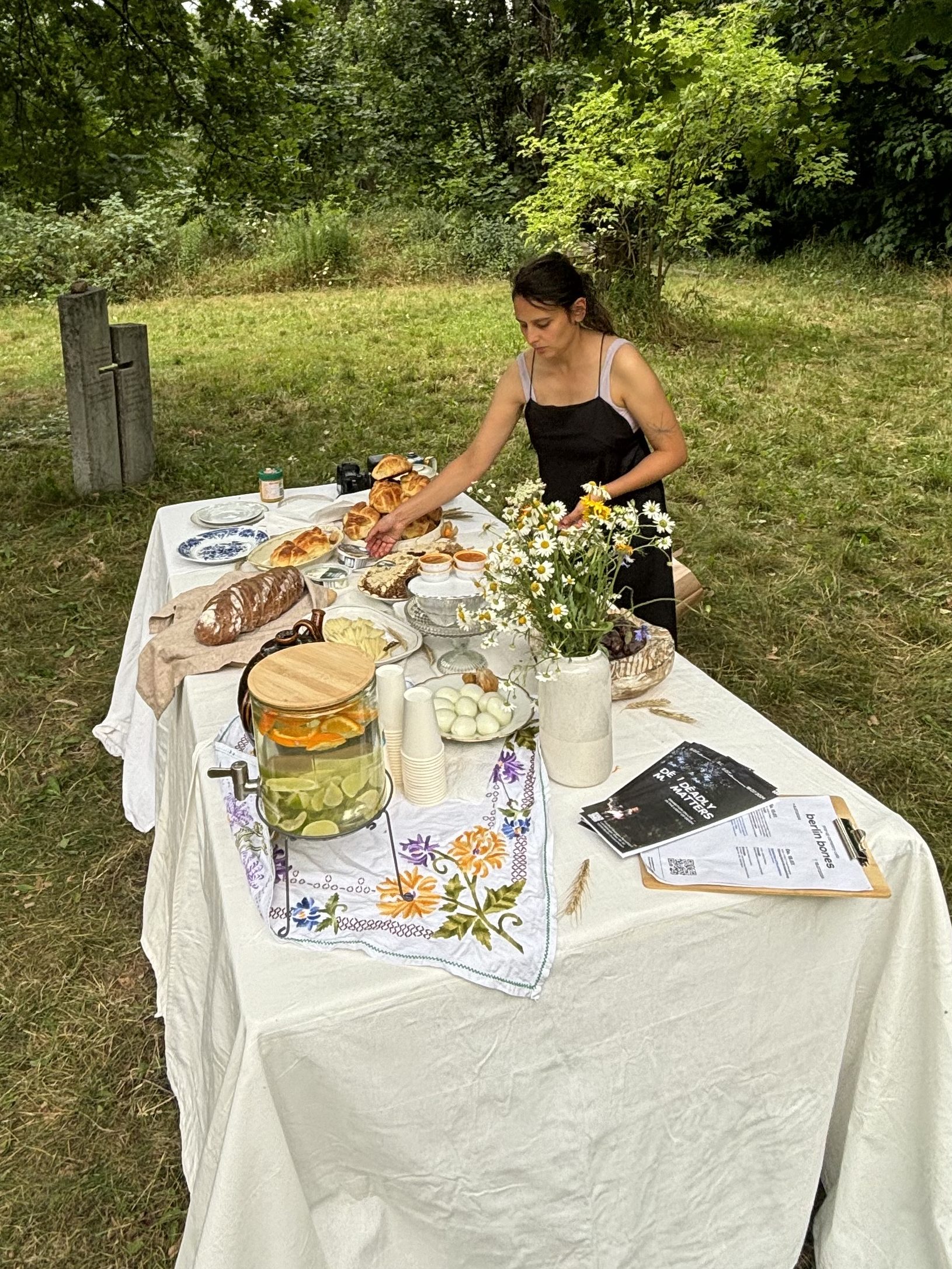
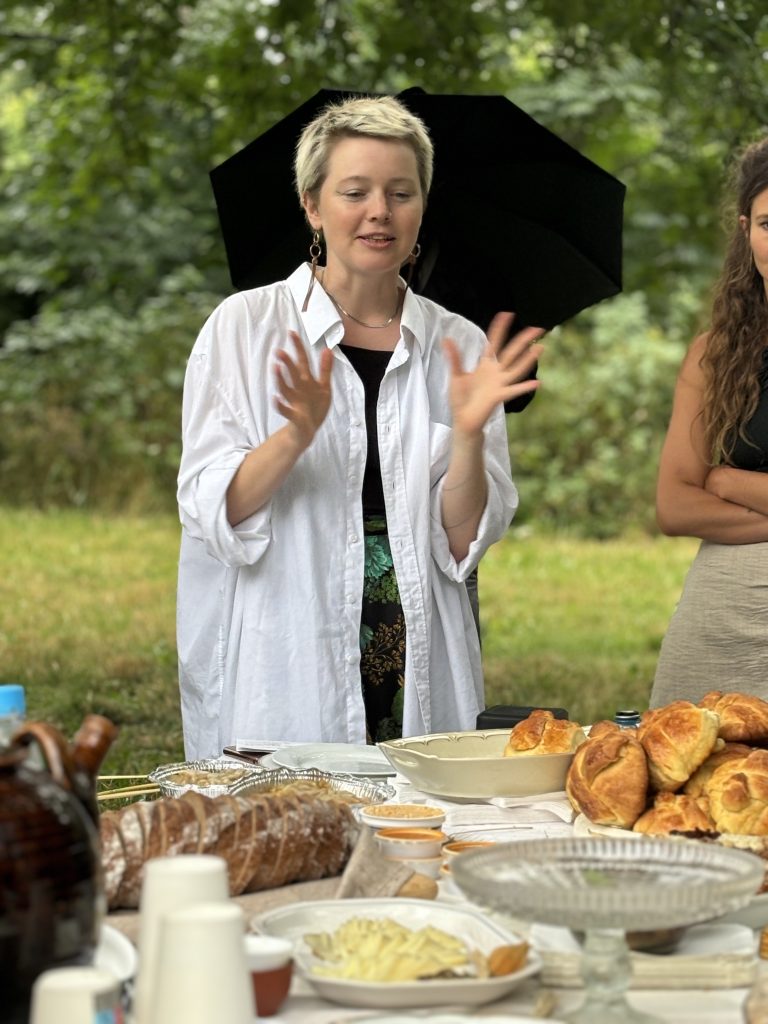
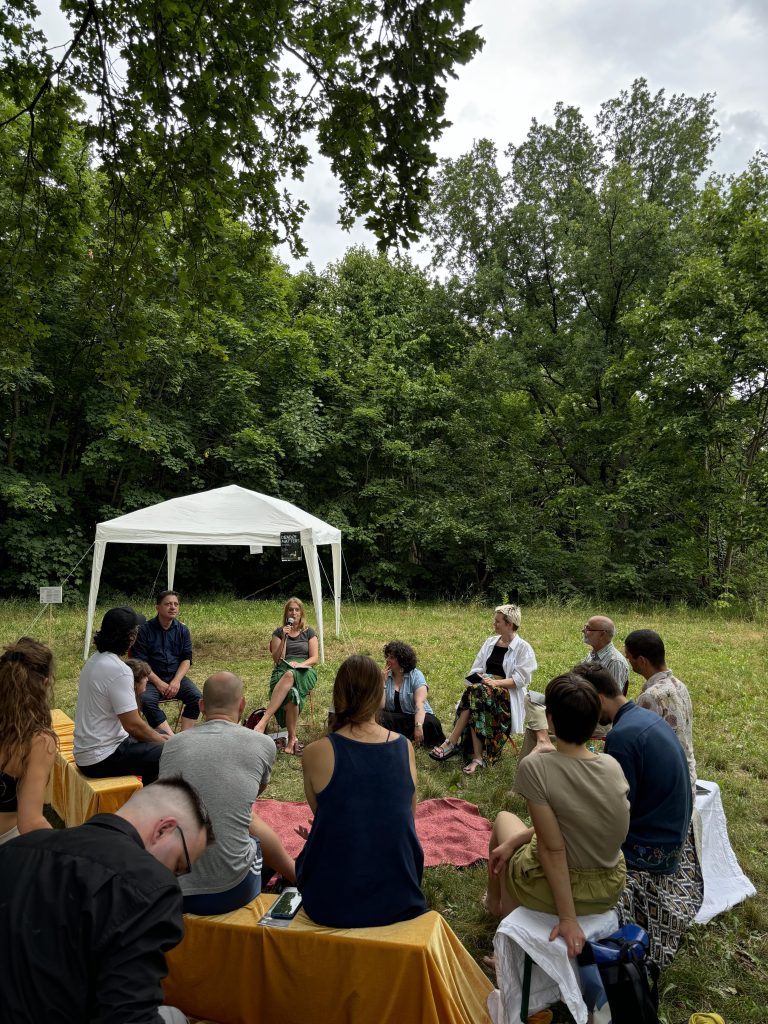
Death Picnic
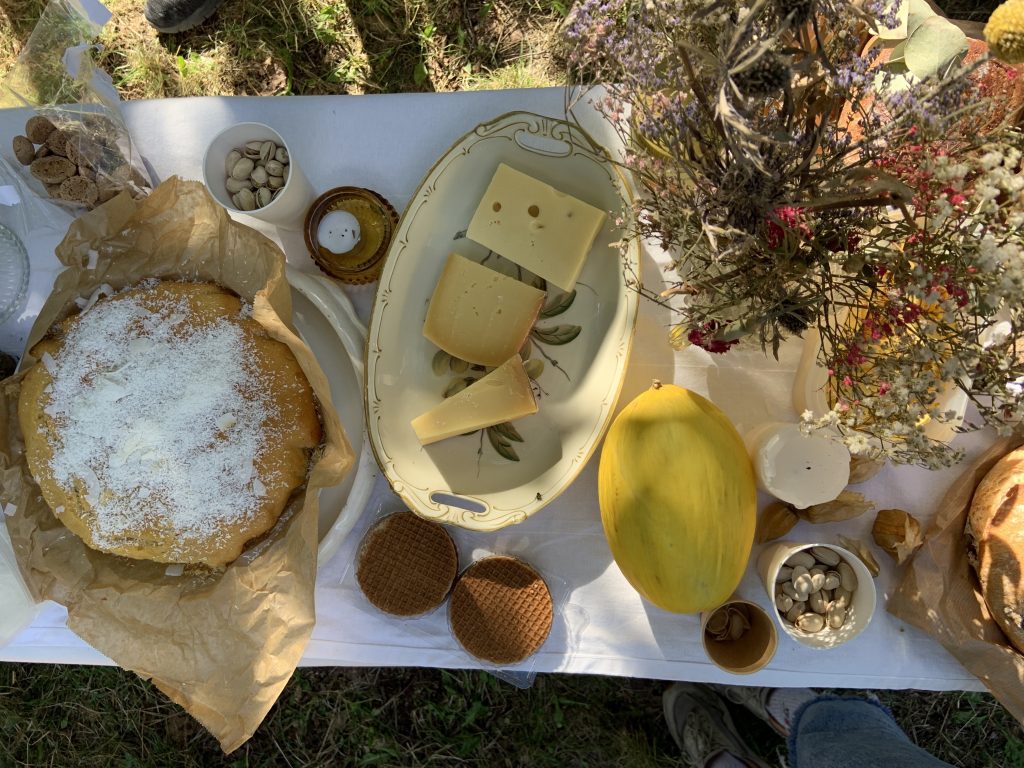
For a time, people would picnic among the deceased, visiting cemeteries to share food and stories with both the living and the dead—a tradition that still thrives in many cultures. The Death Picnic was an invitation to bring a dish and a story that reminded guests of someone they had lost. “I wasn’t sure if anyone would respond, so I was deeply moved when our table filled up with delicious meals: favorite salads of partners, Leichtturm Käse, spicy watermelon, homemade cakes, and traditional Bavarian Kartoffelsalat.”
It was a beautiful exchange of meals and stories, co-moderated by Angela Craig-Fournes / Funeral Ladies, who has been hosting the Death Café in Berlin for 10 years, beginning at Cafe Finovo in the Alten St. Matthäus Kirchhof in Schöneberg.
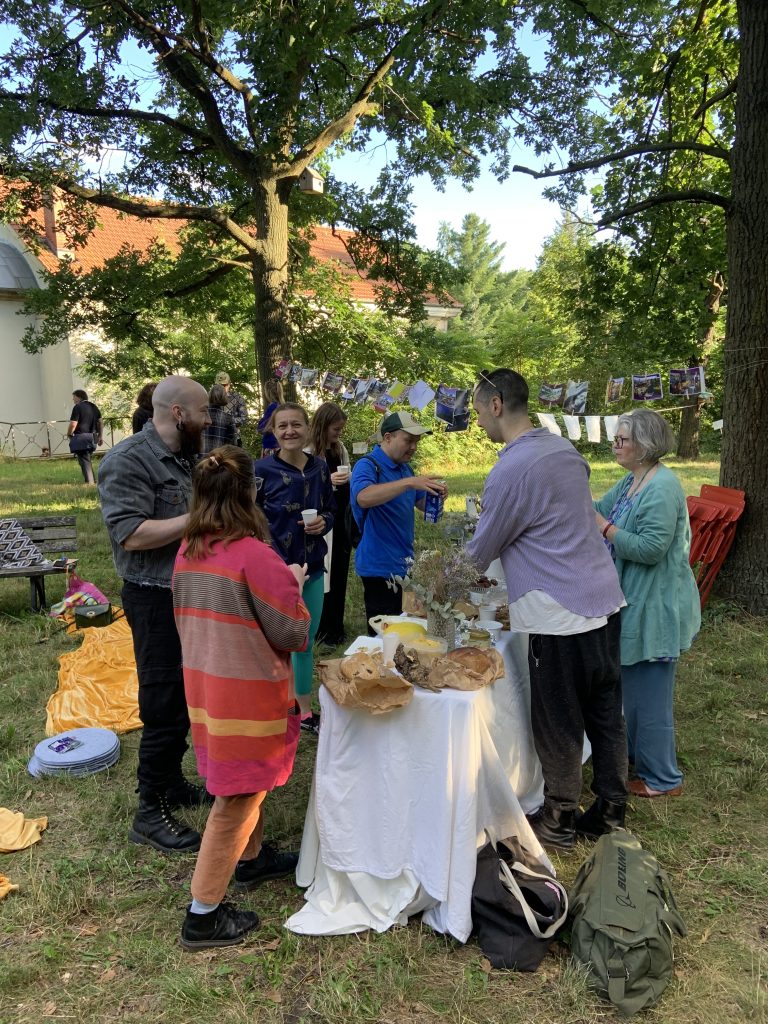
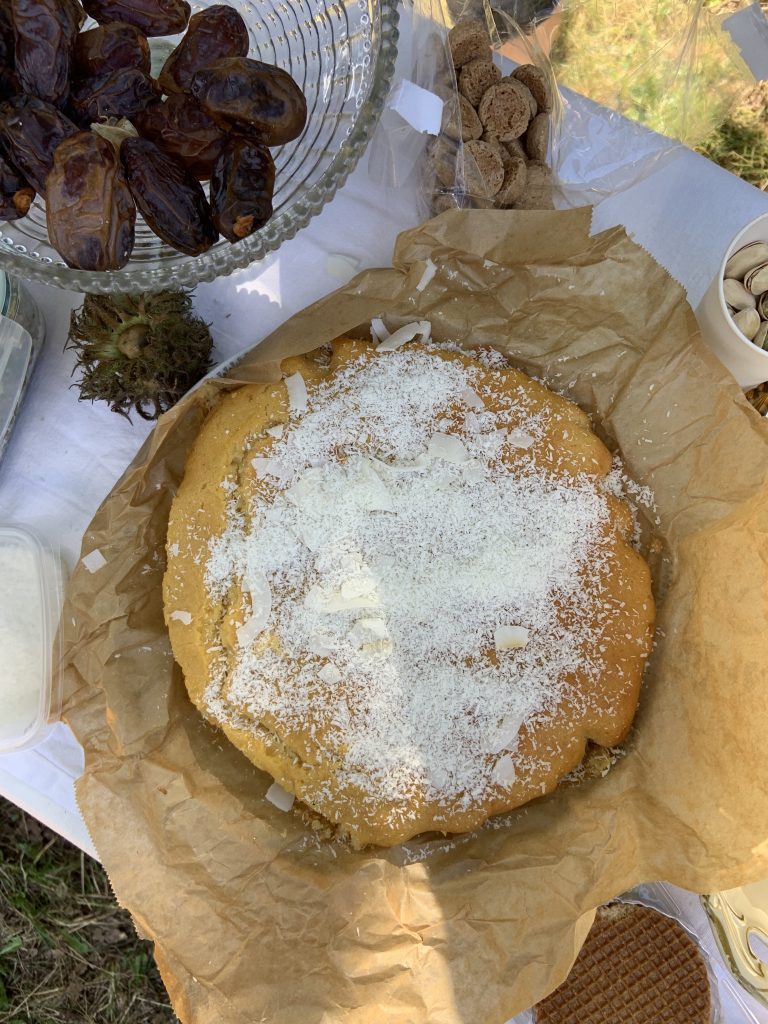
Food stories
The results of this exchange, along with the collected stories, were presented at the exhibition’s closing, accompanied by illustrations and a death-themed cake. It was heartening to see that the open call for stories inspired some to write down recipes, search for old photos, and even create new ones. Below, you can read some of the illustrated stories that were collected.
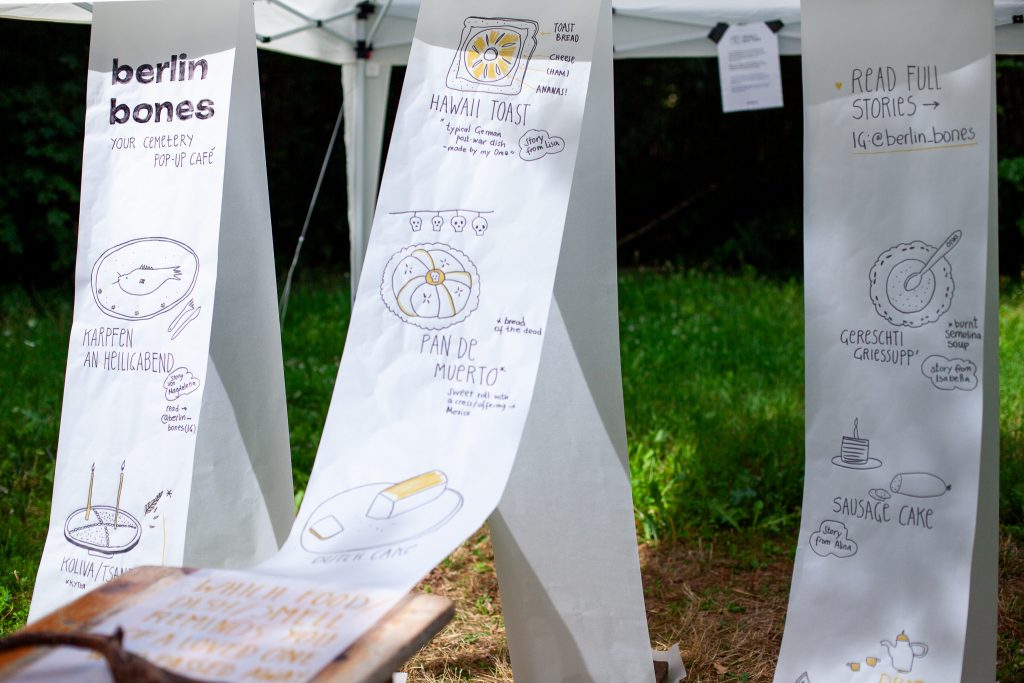
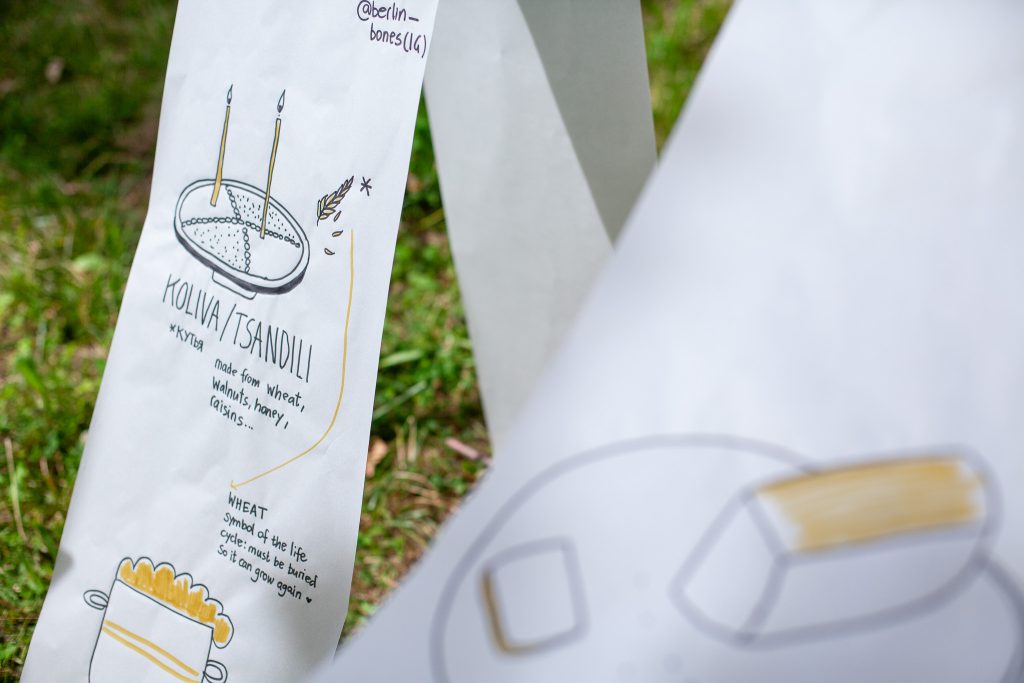
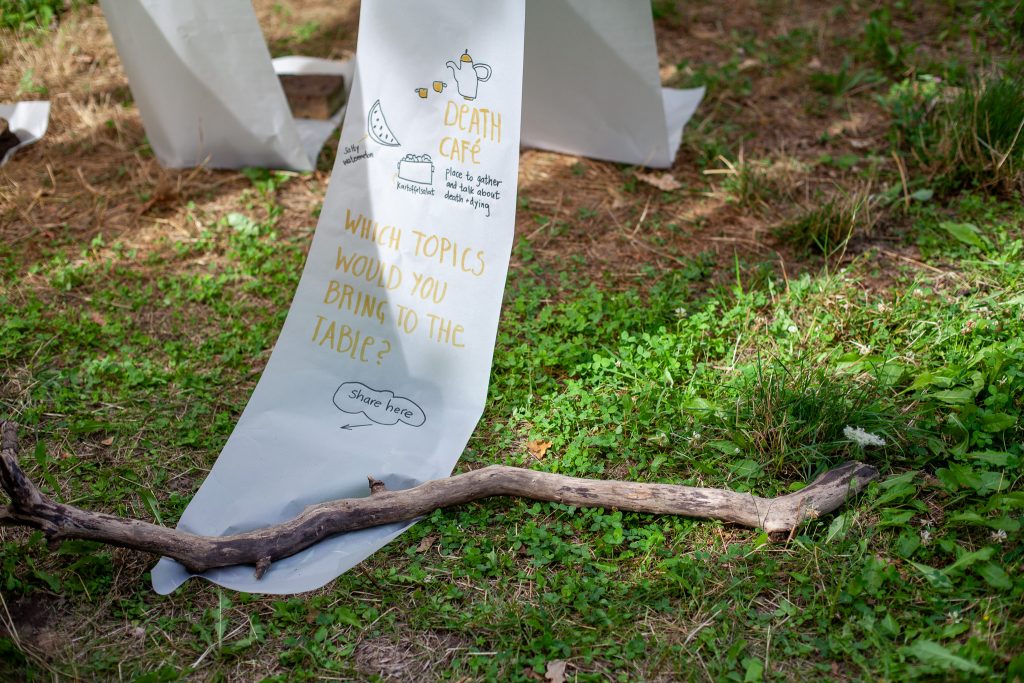
Gereeschti Grießsupp’ un’ Grumbeerpannekuche — Story from Isabella
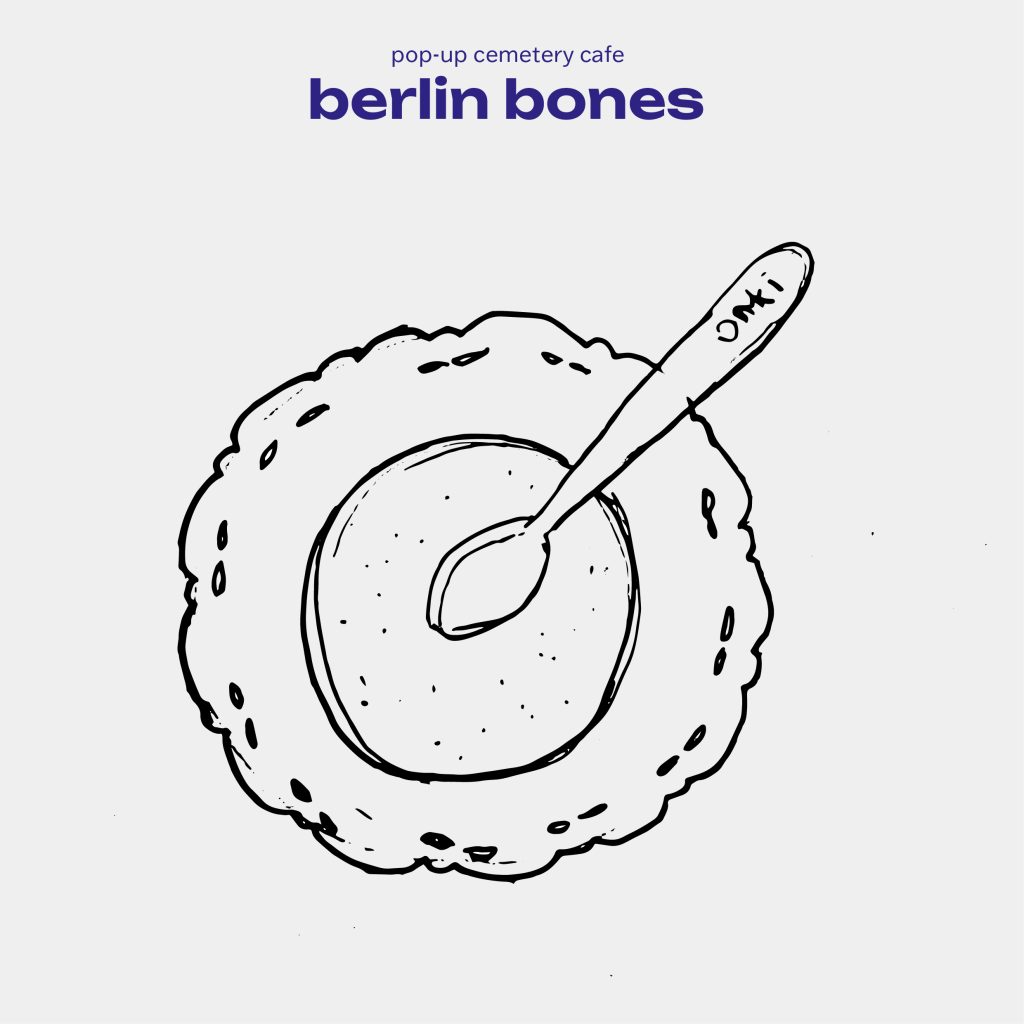
Between the ages of 10 and 18, I used to visit Tanti and Onki (aunt and uncle, my godparents who were like grandparents and sometimes parents to me) every Tuesday for food after school. My Onki always cooked, and even though it was „only“ lunch during the week, he always made two dishes – most of the time with soup as a starter.
One of my favorite soups was gereeschti Grießsupp’, a roasted semolina soup with flavors of slightly burnt grains that savorously warm the heart. Simple, with only two ingredients, but very special to me.
Sometimes he paired it with Grumbeerpannkuche un’ Abbelmuus, thinly baked potato pancakes, and a tangy sweet apple sauce, that added crunchy-creamy textures and filled the whole room with a pan-fried scent.
In January 2022, we made the pairing together. He taught me every step: with the right ingredients, without exact measures, made to listen to my taste buds and gut. It was his last and my first time cooking it. Soon after that, he was diagnosed with colon cancer and nine months later passed away/over. I think he knew what was to come. That’s why he taught me.
I am so grateful for this memory, and when I miss him and his sense of home, I make myself a Gereeschti and hear his voice in my head: Es gebbt nix besseres als was werklich guudes. “There is nothing better than something really good” – his way of expressing contentment over a self-made meal.
Ingredients
- Durum wheat semolina / Hartweizengrieß
- Vegetable or bone broth / Gemüse- oder Fleischbrühe
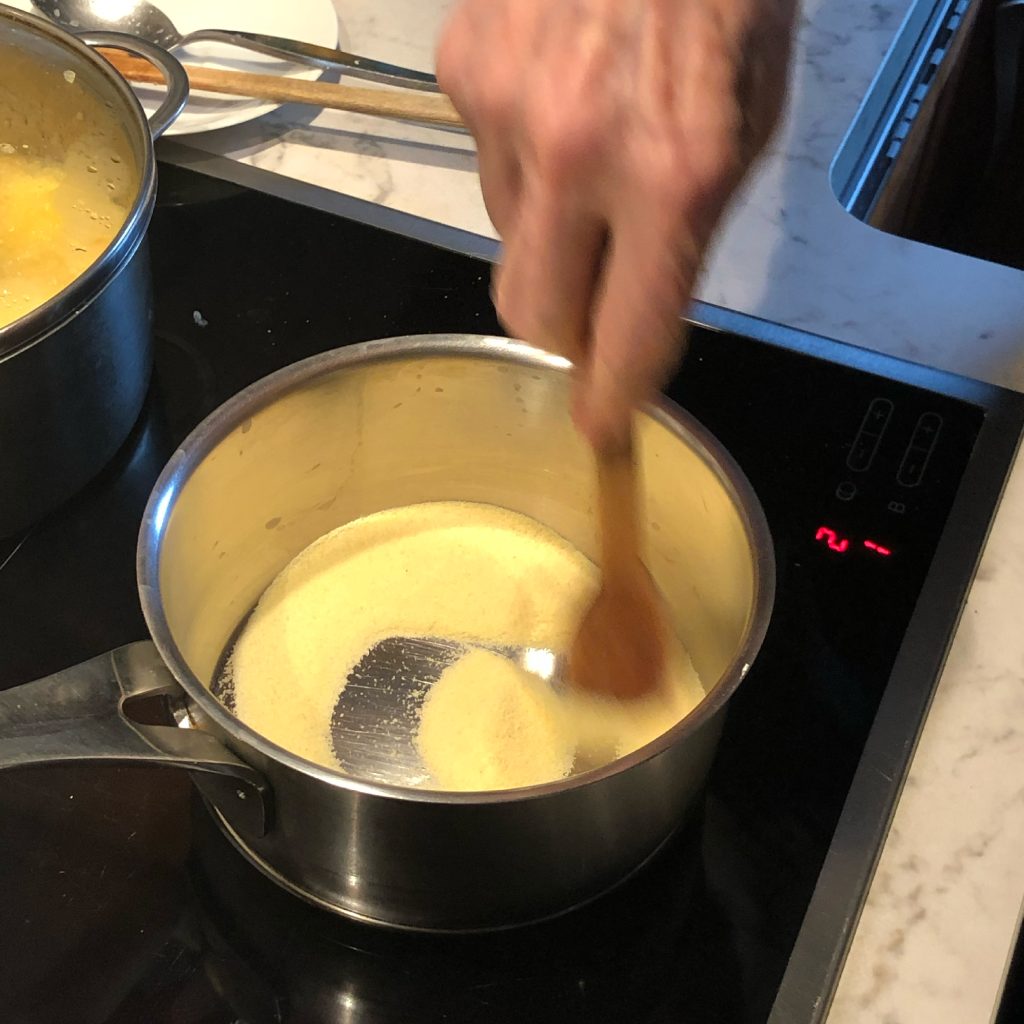
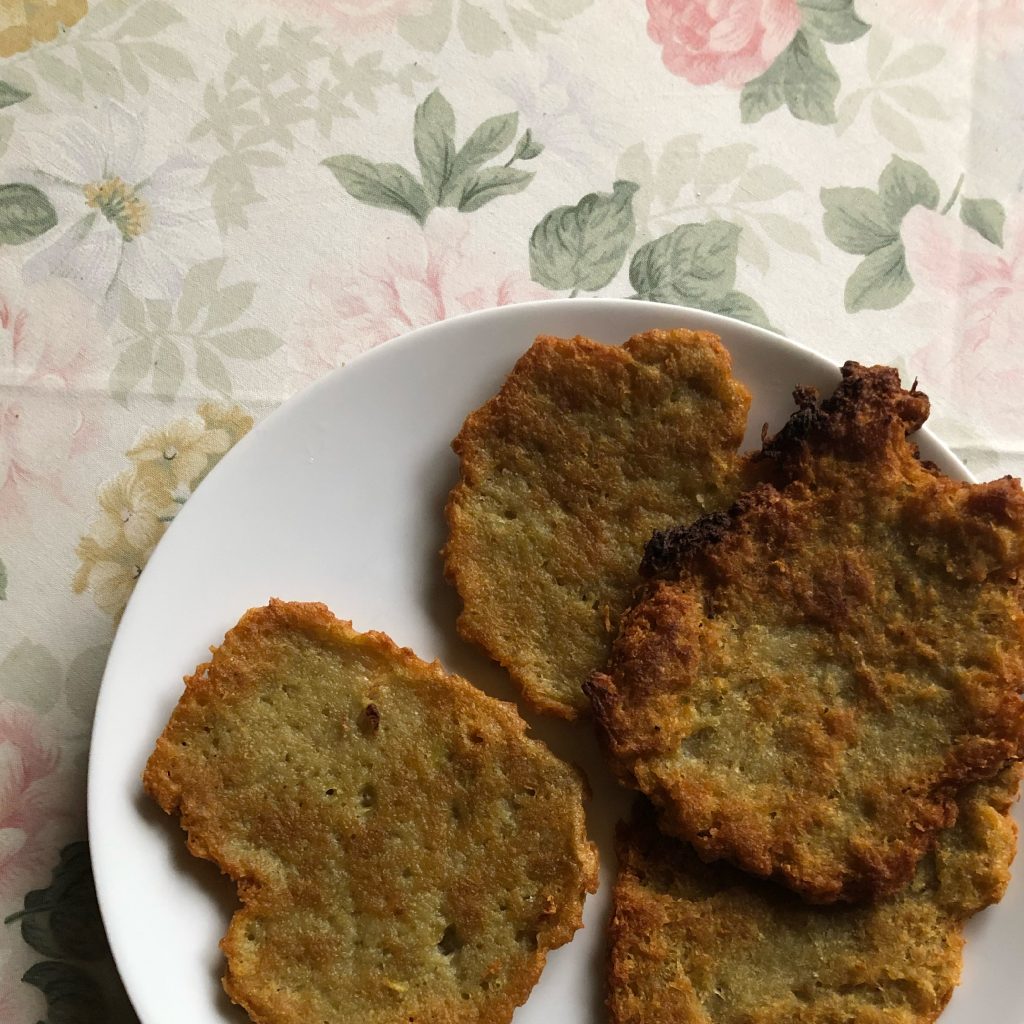
Recipe (max 15 min)
- Cover the bottom of the pot with a thick layer of semolina
- Roast & stir continuously until slightly browning
- Turn down the heat once you smell the toasty-ness
- Prep the broth of your choice in a separate pot and add it to the toasted semolina, ladle by ladle
- Serve directly for a layered brothy soup with semolina on the bottom or continue stirring gently until the soup thickens
Karpfen an Heiligabend — Story from Magdalena
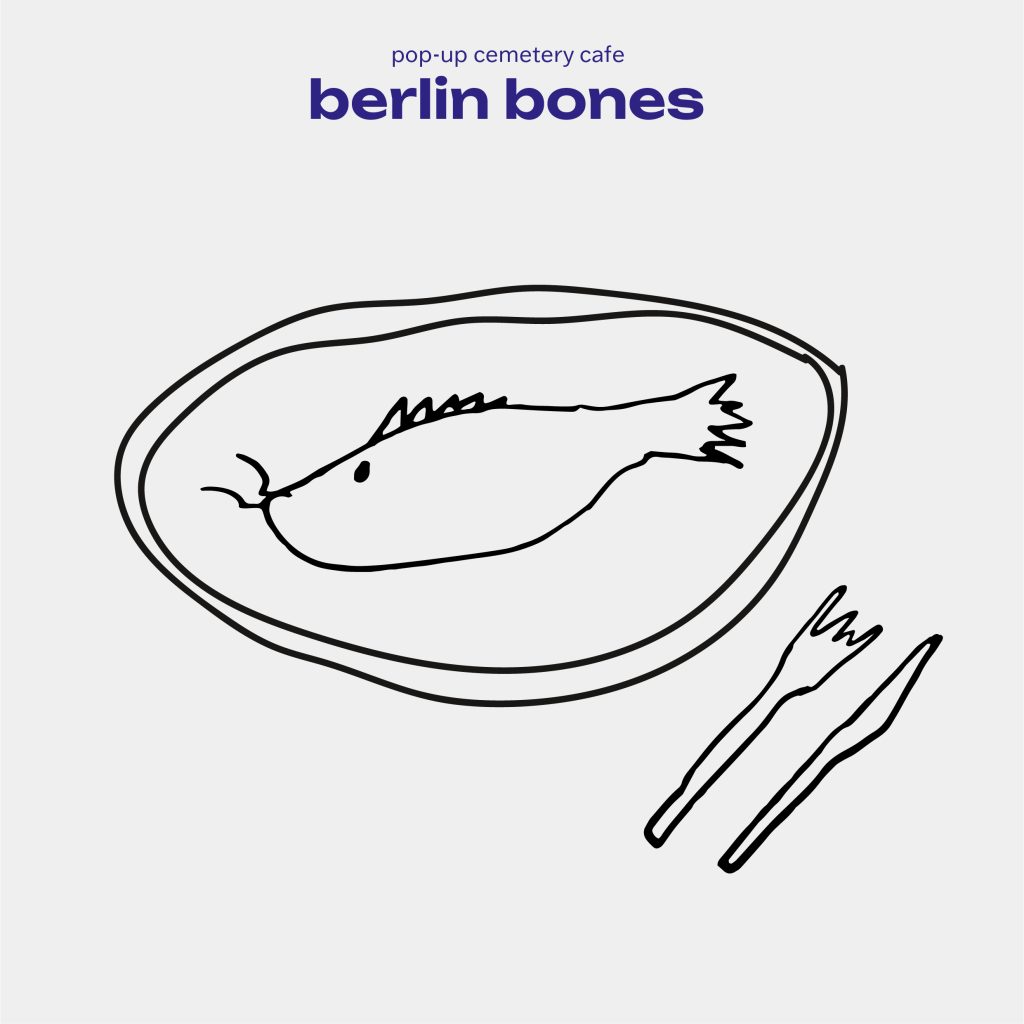
“Meine Familie kommt aus Schlesien. Seit ich mich erinnern kann, haben wir jedes Jahr an Heiligabend das gleiche Festessen: Barszcz mit Ei als Vorspeise, Karpfen, zwei Sorten Kapusta und Pierogi als Hauptgericht, Moczka und Kompott als Nachspeise.
Den Karpfen hat früher immer mein Opa zubereitet. Frisch gekauft, manchmal noch zuckend, hat er ihn erst ausgenommen, filetiert und in einer Wäschewanne mit Zwiebeln und Salz über Nacht mariniert.
An Heiligabend war der Tisch schon vorbereitet und wir alle in festlicher Kleidung. Nur mein Opa stand im weißen Unterhemd in der Küche und hat den Fisch paniert und in heißem Butterschmalz gebraten.
Mein Opa ist 2006 gestorben. Seitdem haben mein Onkel und mein Vater die Karpfentradition übernommen – filetieren, marinieren und frisch an Heiligabend braten. Beide stehen sie im Unterhemd in der Küche um ihre schicken Hemden nicht mit Butterschmalz vollzuspritzen. Und jedes Jahr erinnern wir uns dabei alle gemeinsam an meinen Opa – vor allem jetzt, da mein Onkel mit seinem Bierbauch und grauen Haaren ihm immer ähnlicher wird. Auch beim Essen reden wir über meinen Opa – ob der Fisch genauso gut schmeckt wie bei ihm, wie er die Kapusta zubereitet hätte, wie gut er gekocht hat… inzwischen ist das auch schon eine Art von Tradition.”
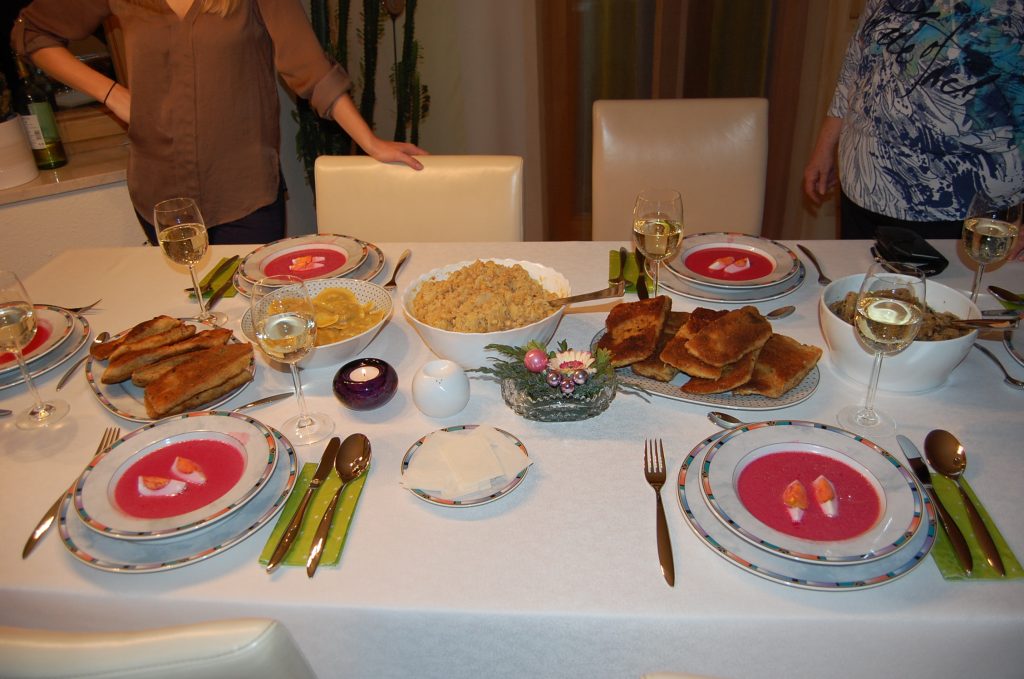
Hawaii Toast — Story from Lisa
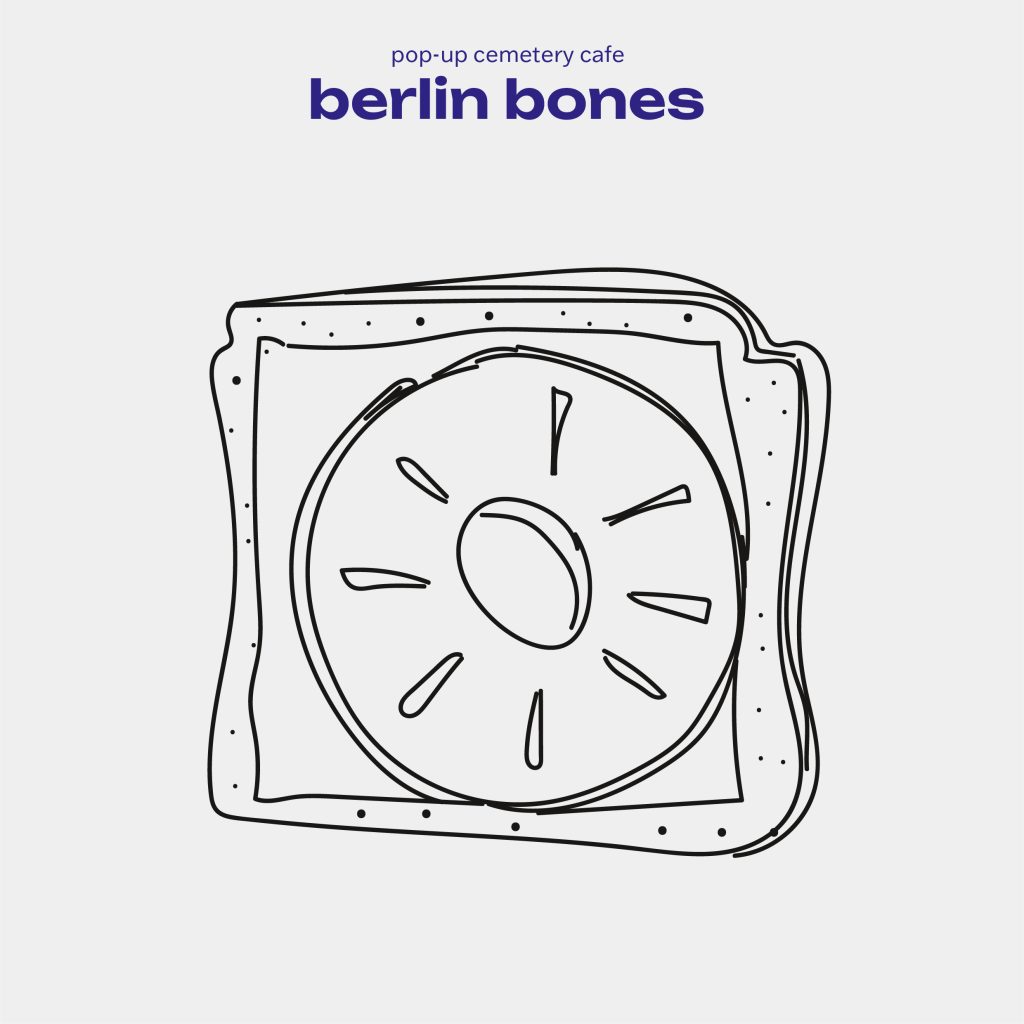
One recipe that always reminded me of my grandmother was “Hawaii Toast” – a very typical German post-war dish: A piece of white bread, ham, and canned pineapple topped with a processed cheese slice. She would order it all the time at the restaurant when everyone else was going for Schnitzel or Pizza. Once I was on a boat trip to the Cyclopean Islands in Sicily; they served us pineapple with roasted seeds, and that’s when I found out I was allergic to fresh pineapple.
When my grandmother was in the hospital because of pancreatic cancer, my mother wanted to treat her to some extra vitamins – fresh pineapple. As it turned out, not only did we share the same sign of the zodiac, we also seemed to share a few physical malfunctions. These days, I occasionally eat Toast Hawaii, and when I do, I remind myself of her and lift my tin of pineapple in her honour.
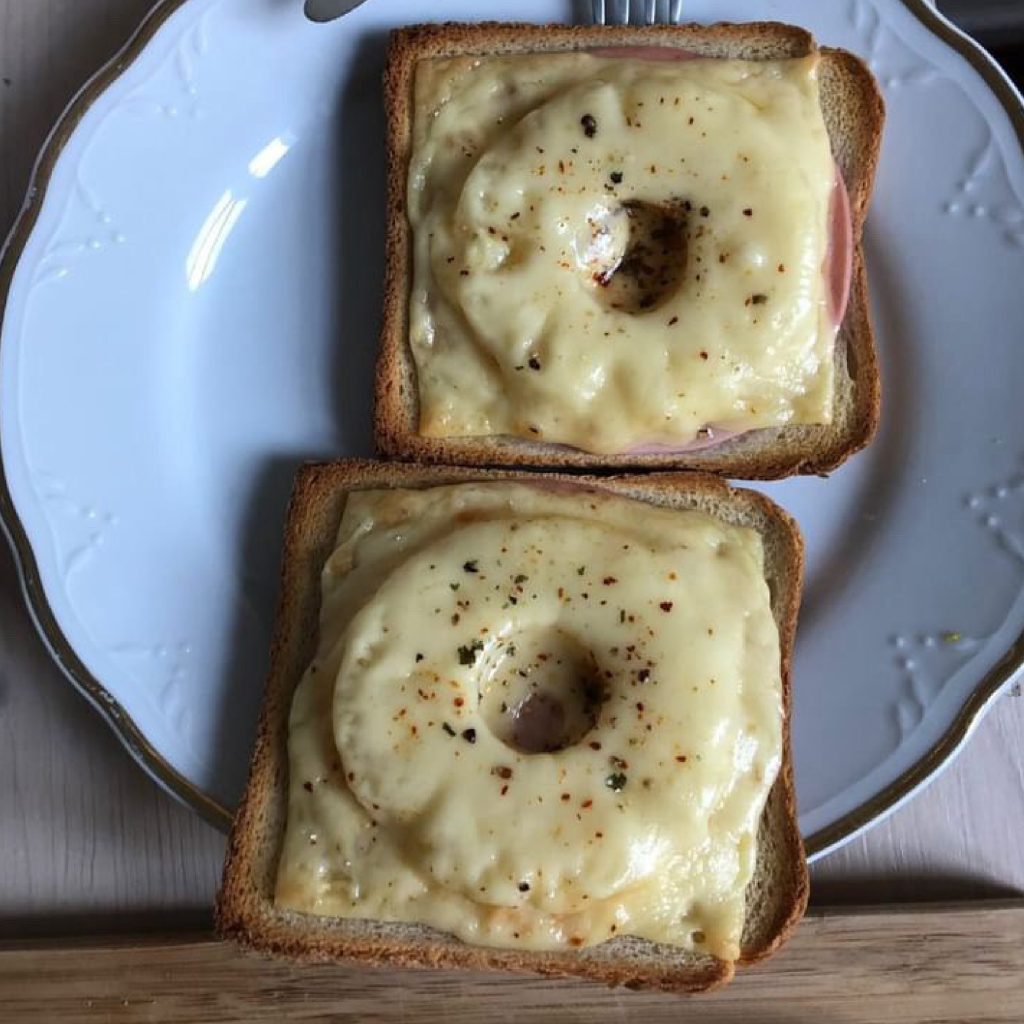
Do any stories come to your mind? Send a message at katharine.romanova(at)gmail.com.
Here are some guiding questions you could use:
- Do you think sharing food can be a source of comfort and consolation?
- Which dish always makes you think of a loved one who has passed away?
- Is there a particular smell or taste that instantly brings back memories of someone or something you’ve lost?
- Do you have a specific recipe that you make to honor and remember someone special?
- Have you created any personal rituals involving food to cope with grief?
- Are there any special foods or rituals your family or friends use to remember loved ones? How have these traditions evolved?
- Are there any rituals connected to food and eating that you follow out of tradition or habit?
Big THANK YOU:
Deadly Matters Collective: Aglaya Demidenko, Natallia Kunitskaya, Sascha Lyamina, Anna Saridi, Tanya Sharapova and Masha Zinger, C*SPACE, Maxim Youth Center, Micha Koch & Studio Weißensee, Sjoerd, Rita Malina, Alina Beriakova, Olga Golovina, and my guests and co-moderators, among others Jasmin El-Manhy, Angela Craig-Fournes, Gesine Last, Isikali Karayel, Dr. Dharma Raj Bhusal.
The exhibition Deadly Matters is funded by Senatsverwaltung für Kultur und gesellschaftlichen Zusammenhalt.
